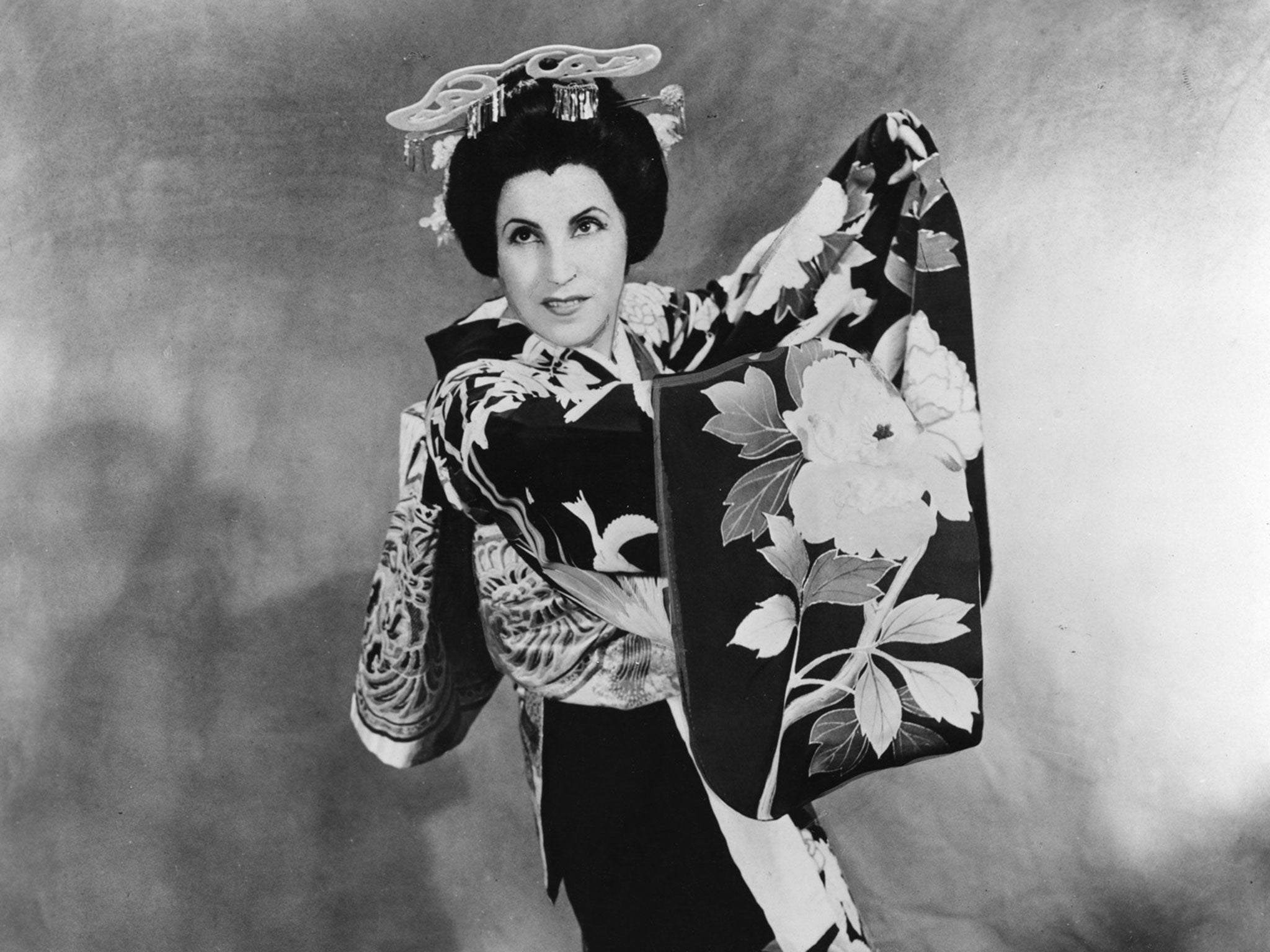Licia Albanese: Soprano especially acclaimed for her portrayals of Violetta in 'La Traviata' and Cio-Cio-San in 'Madame Butterfly'

The soprano Licia Albanese, who has died at the age of 105, ennobled the tragic heroines of Puccini and Verdi in hundreds of performances with the Metropolitan Opera in New York, and on other leading world stages.
For more than a quarter of a century, from her debut in 1940 until her final curtain call in 1966, Albanese was a fixture at the Met. She sang there in more than 400 performances of 17 roles – most notably Cio-Cio-San, the title character of Puccini’s Madame Butterfly, and Violetta, the Parisian courtesan of Verdi’s La Traviata. Although perhaps better known for her Butterfly, Albanese played Violetta more often than any other soprano in the Met’s history.
Through talent and sheer stamina, she became a leading lady when the Met was housed at 39th and Broadway and the Ritz-Carlton charged visiting musicians $8 per night. Her first performance as Cio-Cio-San, at Milan’s Teatro Lirico in 1934, came as a surprise to theatre-goers, as well as to Albanese. A music student at the time, she was attending a performance of Madame Butterfly when the soprano fell ill. Word got out that there was a young singer in the house who knew the part, and Albanese was called onstage.
Six years later, on 9 February 1940, she debuted at the Met. “A new Butterfly ... was seen last night in the title part of Puccini’s opera,” Olin Downes wrote in The New York Times. “She quickly won the audience’s approval by the freshness of feeling, the interest of detail in her performance and the prevailing eloquence of her song.”
Albanese was widely praised for the emotional sensitivity she displayed in her portrayal of Cio-Cio-San, a geisha who patiently and tragically awaits the return to Japan of the beloved US Navy lieutenant who fathered her young son. “A butterfly never sits on a flower,” the soprano observed. “It flies here and there. That was my Butterfly on stage. I never stopped studying or finding new things to make Butterfly profound.”
In La Traviata she portrayed Violetta Valery, the consumptive heroine who, after a life of frivolity, discovers love and fulfillment too late. “She created a complete personality that lived and loved and drank champagne and made decisions and died,” wrote the critic Virgil Thomson. “One has heard many Violettas. Albanese’s is, I should think, one of the great ones, because, like all the great ones, it resembles no other yet is wholly convincing.”
Her other roles included Susanna in Mozart’s The Marriage of Figaro, Micaela in Bizet’s Carmen and Nedda in Leoncavallo’s Pagliacci. It was noted that her performances as Mimi in Puccini’s La Bohème, like those in Madame Butterfly and La Traviata, revealed her singular skill.“Nowhere was [her] mastery of her art more palpable,” reads her entry in the International Dictionary of Opera, “than during the moments that required her to ‘expire’ on-stage.”
Felicia Albanese was born in Bari, Italy, in 1909. She aspired to be a dancer before revealing her promise as a singer. She sang throughout Italy, including in Parma and Naples and at La Scala. Among her early supporters was the tenor Beniamino Gigli. Albanese first went to the US in 1939 and became an American citizen six years later. She sang at opera houses across the US and around the world.
At the Met she sang with leading stars including Ezio Pinza, who once injected some humour into the soul-sapping tragedy of La Bohème by placing a rotting herring under the pillow where Albanese’s Mimi was to die: “I kept smelling something terrible. I kept singing, but in between I would whisper to everyone, ‘My God, what is that smell?’ And finally at the end, Pinza pulled a herring out from under my pillow. People came backstage at the end and said, ‘Oh, how beautiful it was; you were all crying so much it made us cry.’ But we had really been laughing so hard we had tears in our eyes.”
She gained experience under the baton of the revered Arturo Toscanini. He led the performances of La Traviata and La Bohème, both with tenor Jan Peerce, that were among her most important recordings. A more recent recording was her 1985 performance in Follies, the Stephen Sondheim musical, which also featured Elaine Stritch and Carol Burnett.
In retirement she gave master classes and supported young artists through the Licia Albanese-Puccini Foundation. In 1995 she received the National Medal of Arts. At Lincoln Centre, the Met’s location since 1966, she was often heard singing on opening night during the traditional rendition of the US national anthem.
Her husband of 45 years, Joseph Gimma, died in 1990. “The best note,” Albanese once recalled, “is the last breath. All you hear is that breath when I die. You breathe and then you die.”
Felicia Albanese, opera singer: born Bari, Italy 23 July 1909; married Joseph Gimma (died 1990; one son); died New York 15 August 2014.
© The Washington Post
Subscribe to Independent Premium to bookmark this article
Want to bookmark your favourite articles and stories to read or reference later? Start your Independent Premium subscription today.

Join our commenting forum
Join thought-provoking conversations, follow other Independent readers and see their replies